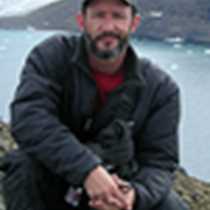Williams Cove
Alaska in September, when fall sets in—quickly. The patterns of the summer are predictable in Alaska, first to show itself is the skunk cabbage which burns through the overburden of snow to be the first to attract the newly hatched insects. The berry plants and sedges start their growth followed by the animals who come out of the burrows. Next the wildflowers and song birds have their time in the spotlight with amazing swashes of both color and sound. By this time the berries have started to show when the plants have stopped growing just as the first salmon arrive. This indicates the height of summer; bears eating salmon followed by every body else. The show continues into the fall but the change is abrupt. This is all watched over by the patriarchs and matriarchs of the forest. The spruce and hemlock trees, centuries old in some cases.
This morning we awoke in Tracy Arm to see another century old pattern in Alaska, the ice. In the Zodiacs we watched as snow turned to ice in glacial form now spills back into the sea from whence it came so many centuries ago. None of the previously mentioned forest pattern happens because there is no forest here, only a few dryas and alder plants along the magnificent cliffs.
By the afternoon we were deep in the heart of the temperate rain forest. We witnessed the changing of the season and the presence of the plants and animals even if we knew them only to have been there recently by their dropping of all color.
Fall comes quick to Alaska but all “good” things like summer must come to an end. The berries will die back, the salmon will stop coming, the animals will return to the burrows only to start the process again and again; as the wheel turns.
Alaska in September, when fall sets in—quickly. The patterns of the summer are predictable in Alaska, first to show itself is the skunk cabbage which burns through the overburden of snow to be the first to attract the newly hatched insects. The berry plants and sedges start their growth followed by the animals who come out of the burrows. Next the wildflowers and song birds have their time in the spotlight with amazing swashes of both color and sound. By this time the berries have started to show when the plants have stopped growing just as the first salmon arrive. This indicates the height of summer; bears eating salmon followed by every body else. The show continues into the fall but the change is abrupt. This is all watched over by the patriarchs and matriarchs of the forest. The spruce and hemlock trees, centuries old in some cases.
This morning we awoke in Tracy Arm to see another century old pattern in Alaska, the ice. In the Zodiacs we watched as snow turned to ice in glacial form now spills back into the sea from whence it came so many centuries ago. None of the previously mentioned forest pattern happens because there is no forest here, only a few dryas and alder plants along the magnificent cliffs.
By the afternoon we were deep in the heart of the temperate rain forest. We witnessed the changing of the season and the presence of the plants and animals even if we knew them only to have been there recently by their dropping of all color.
Fall comes quick to Alaska but all “good” things like summer must come to an end. The berries will die back, the salmon will stop coming, the animals will return to the burrows only to start the process again and again; as the wheel turns.




